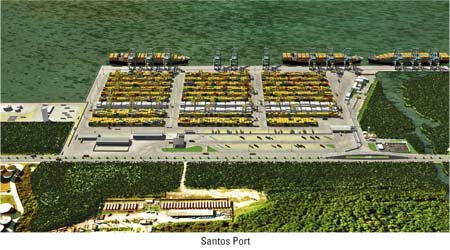2. How much did APM Terminals spend to acquire a 50% share in the TIL project?
APM Terminals has made a substantial investment but for commercial and competitive reasons, this figure is not made public.
3. Why did TIL sell 50% of its shares in the project to APM Terminals?
In the terminal industry, it is common to work in consortia or partnerships, and APM Terminals brings experience from its global portfolio to the project, both in terms of developing as well as operating the terminal. This will benefit the terminal, the Port of Santos and all its customers; shipping lines and shippers.
4. In what other terminals does APM Terminals and TIL share activities in?
This is the first joint project for TIL and APM Terminals.
5. Does the BTP terminal have an anchor client?
MSC is expected to be the anchor client, and is also planning to move volume from other locations to Santos. Various shipping lines have shown an interest in BTP, but BTP cannot reveal details related to contracts and negotiations with prospective clients.
6. What's the economic impact of the new port?
The new terminal will create jobs by attracting more shipping line activity and improving supply chain efficiency and scale.
7. What will the terminal offer - that is not offered in today's market?
Compared to other terminals in the Port of Santos, BTP will offer three berths with deep water allowing the next generation of vessels that require a water depth of 12-14 meters to be handled up to the highest efficiency standards. In addition, BTP will provide sufficient capacity so that its customers can manage their supply-chain more efficiently.
8. How will BTP compete against other ports in the region?
BTP will, as one of the first terminals in Latin America, be able to efficiently handle the next generation of vessels that are expected to be deployed on the trades to/from Latin America. This could potentially attract additional transhipment business to the Port of Santos, broadening Santos' network, and BTP is ready to accommodate this.











